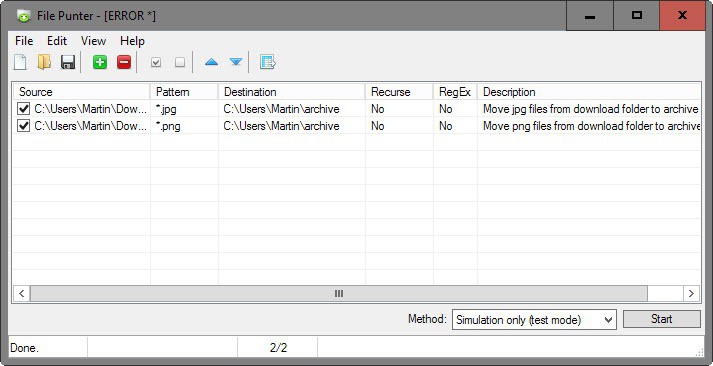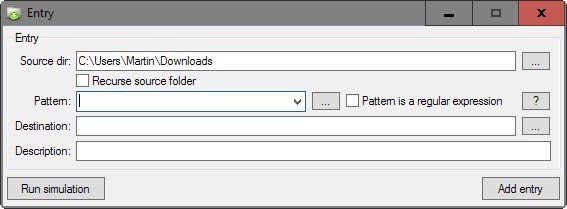File Punter is a free portable program for all supported versions of Windows that provides you with options to move or copy files using a rules-based system.
I like my files organized. What I mean by that is that I prefer them sorted into appropriate folders whenever possible.
So, instead of having one big folder full of mp3 files, I prefer them to sorted into folders named after artists and albums instead.
The same is true for movies, videos, images, and documents. The only exception to the rule is the download folder which lists hundreds of files and folders. Every now and then though, I move interesting programs and files to another location for safe keeping.
File Punter

File Punter’s main function is to assist you in moving or copying files to another location. The program is rules based, and the rules you create are remembered by it so that you can re-run them at a later point in time.
That’s ideal for copy or move operations that you do over and over again.
The program itself stars with a blank list, and the first thing you may want to do is add a new rule to File Punter.
Click on the appropriate icon in File Punter’s interface to open the rule creation prompt.

You are required to fill out the source and destination directory, and the pattern. The first two are obvious, but the pattern requires explanation.
You can use a basic pattern, like *.jpg to include all jpg files that File Punter finds in the source folder, or use regular expressions for complex patterns such as a[^n], gr.y or colou?r. Obviously, there are more complex patterns than those provided as examples.
If you use regular expressions, check the box that tells File Punter that you do. You may add an optional description, and have the program crawl all folders recursively under the selected source folder as well.
One of File Punter’s strengths is that you can run a simulation. This takes all data that you have entered and runs it, but instead of moving or copying files, you just get a log file in the end that highlights what would have happened if you’d run the real thing.
You define the method, move, copy, or create shortcuts, in the main interface. This is a bit awkward if you need to run some move and some copy operations. If that is the case, you need to select all move rules first, run the move operation, and then do the same for the copy operation afterwards.
What may be helpful in this regard is that you can export the rules to load them again. You could, in theory, create two files that separate copy and move operations.
Verdict
File Punter is a useful portable program for Windows if you run the same copy or move operations regularly on a PC.